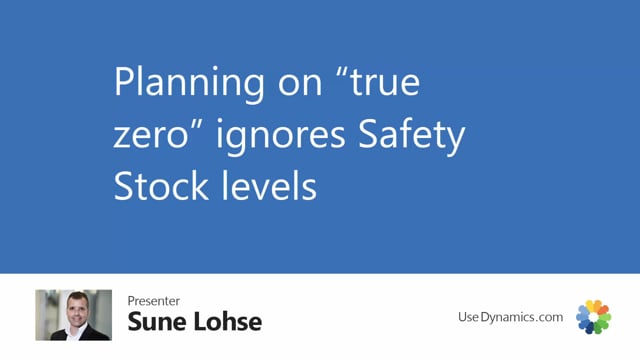
With Reverse Planning, it’s possible to plan on true zero, meaning to ignore safety stock levels.
Normally, in MRP planning, if you have added a safety stock level, this will be interpreted as a zero level.
But in this solution, it’s possible to distinguish between planning with one or the other.
Let’s see how it works.
First of all, I will run a critical plan with whatever criteria here in the planning, and I’ve selected calculating according to safety stock or zero, meaning if a safety stock is added, this should be used, otherwise zero will be used as safety stock.
But as you can see on many lines, the end inventory that I was planning upon is actually higher than zero, but it’s lower than safety stock, hence the trigger.
If I’m planning again with the same criterias, except this time I will plan on true zero down here, it means ignore the safety stock and plan exactly the lines that gets below zero on end inventory.
And this reduces my lines, but they are also more critical.
So, that’s one strategy of getting the most critical items.

